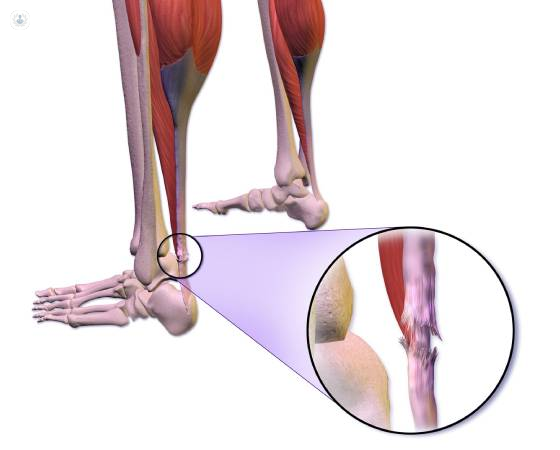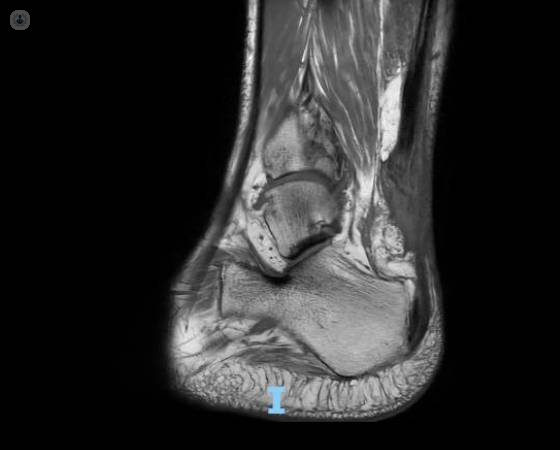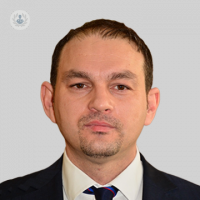Understanding achilles tendon ruptures
Written in association with:The Achilles tendon, named after the Greek mythological hero Achilles, is a vital component of the human body's locomotor system. Situated at the back of the calf, this robust band of tissue connects the two muscles in the calf to the heel bone. Its primary function is to facilitate plantar flexion, allowing movements such as running, walking, and jumping. Despite its strength, the Achilles tendon is susceptible to injury due to its relatively poor blood supply, which affects its healing process. In his latest online article, Mr Efstathios Drampalos gives us his insights.

Causes of rupture
Achilles tendon ruptures typically occur when a sudden and excessive force is applied to the tendon, often during activities like jumping or pivoting. This traumatic event is often accompanied by a distinctive "pop" sensation. It's important to note that a healthy tendon is more resilient to rupture; however, pre-existing conditions such as tendonitis or degeneration can weaken the tendon, making it more prone to injury.
Several factors increase the risk of Achilles tendon damage or rupture, including overuse, improper running technique, advancing age, autoimmune diseases, obesity, and certain medications. Antibiotics and corticosteroids, in particular, can elevate the risk of tendonitis, predisposing individuals to ruptures.

Treatment options
When faced with an Achilles tendon rupture, treatment options typically involve either surgical intervention or non-surgical approaches. Surgical repair may entail open or minimally invasive procedures, sometimes necessitating the repositioning of another tendon, such as the flexor hallucis longus tendon, to support the Achilles tendon. Recovery from surgical repair can take upwards of 24 weeks before full function is restored.
Traditionally, Achilles tendon ruptures were managed through either surgery or complete immobilisation of the leg for approximately two months. While surgery was believed to offer superior outcomes, it carried inherent risks, including wound healing complications and infections, with reported rates as high as 20-30% in some studies.
Advancements in rehabilitation
In recent decades, the landscape of Achilles tendon rupture treatment has evolved significantly. The introduction of early rehabilitation protocols has revolutionised rehabilitation strategies by enabling early mobilisation and weight-bearing activities. Large-scale studies have demonstrated that these protocols are as effective as surgery in promoting recovery while mitigating the risks associated with surgical interventions.
As part of the management of Achilles tendon injuries, patients are typically prescribed an early rehabilitation protocol tailored to their specific condition. While the specifics may vary, the overarching goal remains consistent: to optimise healing, restore function, and minimise the risk of complications.
Mr Efstathios Drampalos is an esteemed orthopaedic surgeon. You can schedule an appointment with Mr Drampalos on his Top Doctors profile.


